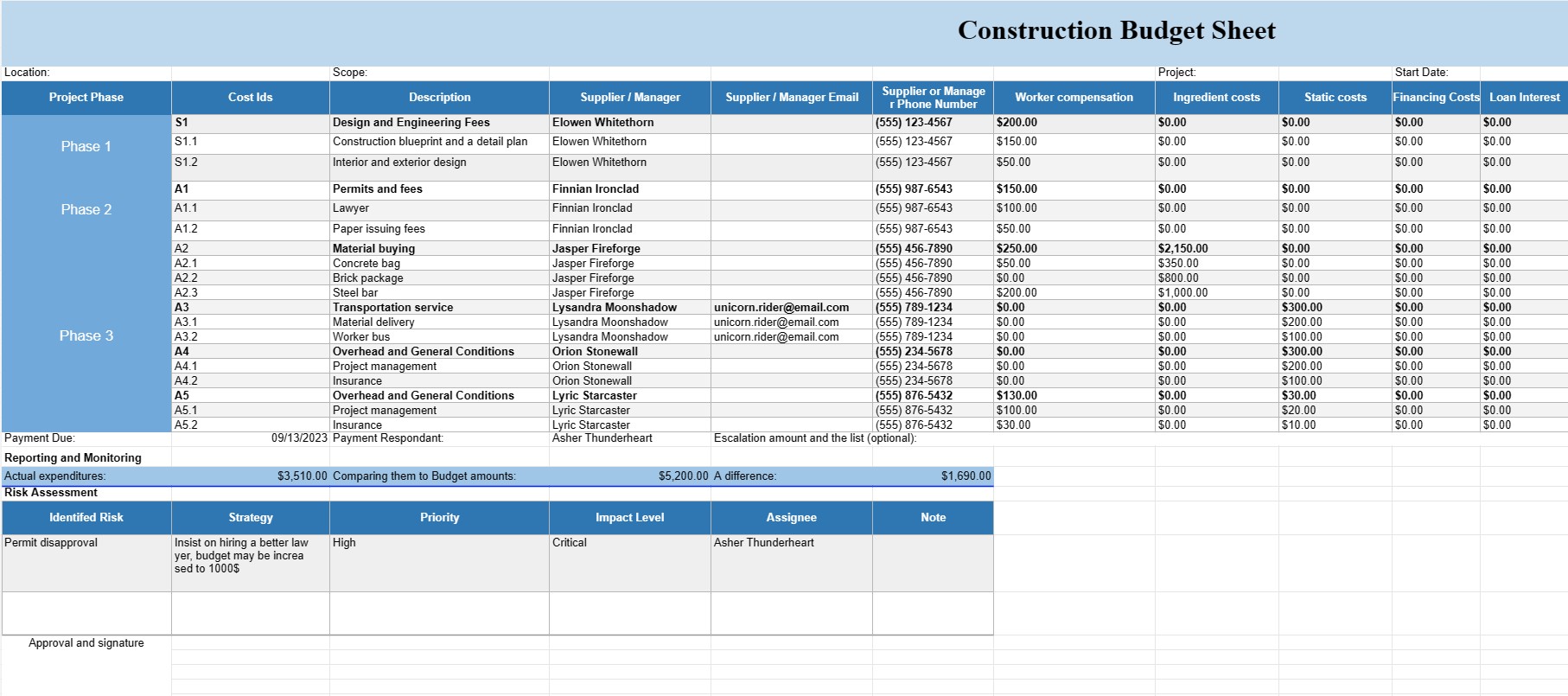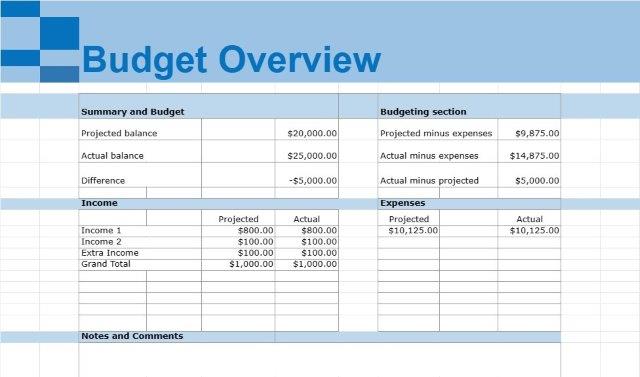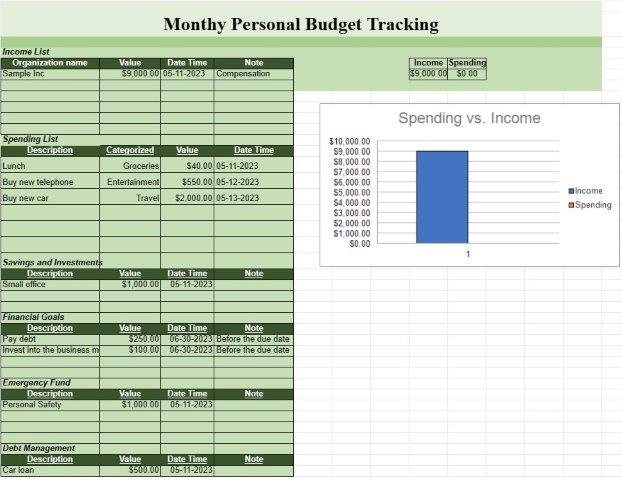

Construction Budget
Category : Budgets
You planned to build a house or an infrastructure? Feel free to use this one to manage the costs and the invoices.
A construction budget document is a comprehensive financial plan that outlines the estimated costs associated with a construction project. It serves as a crucial tool for planning, managing, and monitoring all financial aspects of the project, ensuring that it stays within budget constraints. The construction budget document is typically created during the project's planning phase and serves as a reference throughout the project's lifecycle.
Here are the key components typically included in a construction budget document:
- Project Overview: A brief description of the construction project, including its purpose, scope, location, and any unique characteristics or requirements.
- Cost Categories: The budget document breaks down costs into various categories, such as:
- Construction Costs: This includes costs related to labor, materials, equipment, and subcontractors needed to complete the construction work.
- Site Preparation Costs: Expenses for clearing the construction site, excavation, grading, and any necessary site improvements.
- Permits and Fees: The cost of obtaining permits, licenses, inspections, and other regulatory requirements.
- Design and Engineering Fees: Expenses related to architectural and engineering services, including design, drawings, and consultations.
- Contingency: A reserved amount for unexpected costs, changes in scope, or unforeseen challenges during construction.
- Overhead and General Conditions: Costs associated with project management, insurance, office expenses, utilities, and other administrative expenses.
- Financing Costs: Interest and fees associated with construction loans or financing arrangements.
- Profit and Markup: Builders typically include a profit margin or markup on construction costs to generate a profit from the project.
- Detailed Cost Estimates: A breakdown of estimated costs within each cost category, providing itemized lists of expenses. This can include labor rates, material quantities and costs, equipment rental fees, and more.
- Schedule: A timeline outlining the expected start and completion dates for various project phases. This schedule helps in managing cash flow and coordinating tasks.
- Payment Schedule: A plan for when and how payments will be made to contractors, subcontractors, suppliers, and other parties involved in the project. It often aligns with project milestones.
- Change Order Procedures: A description of the process for handling change orders, which are modifications to the project scope that can impact costs.
- Escalation Clause: Some construction budgets include an escalation clause to account for potential inflation or price increases during the construction period.
- Reporting and Monitoring: A system for tracking actual expenditures and comparing them to the budgeted amounts. Regular financial reports help project managers and stakeholders monitor the project's financial health.
- Risk Assessment: An evaluation of potential risks and uncertainties that could impact the project's budget, along with strategies for mitigating these risks.
- Approvals and Signatures: The budget document often includes spaces for relevant stakeholders to review, approve, and sign off on the budget before the project begins.
Construction budget documents are crucial for ensuring that a construction project is financially viable, well-managed, and successfully completed. They provide transparency, help prevent cost overruns, and allow for effective financial planning and control throughout the project's lifecycle.
Easy Preview and Download Spreadsheet Template
View the full version of a spreadsheet template with no limitations to see if you like it then you can download the excel template to store it on your device and use it for free.
Access Spreadsheet Template from Anywhere
This is working on all popular operating system such as Windows, MacOS, Linux, iOS. You can see the spreadsheet templates and download them without additional programs.
How to use a template
Figure out how to preview, download and then use the spreadsheet template by following the steps which are extremely easy to follow
More similar templates
See more of the spreadsheet templates which are under the same category with the chosen one.



